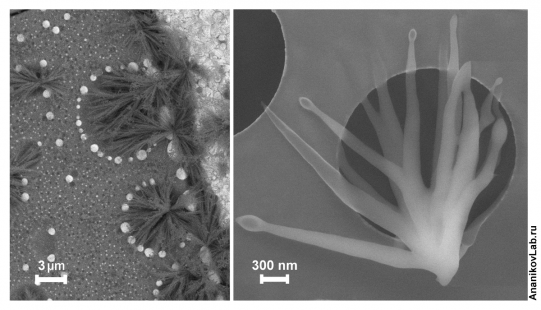Molecular wave of nanosized metal oxide catalyst

Metal oxides represent primary source of catalytic materials for a variety of industrial and research applications, either as an active phase or as a supporting phase. A mechanistic study has revealed the formation of catalytically active species due to partial dissolution of metal oxide in the reaction mixture and generation of soluble metal complexes. Therefore, metal oxides are not directly involved in heterogeneous catalysis; rather, they can be considered as a source of reactive species for solution-state homogeneous catalysis.
Catalysis is the major driving force in modern industry. Catalysis is vital in production of fuels, materials, drugs, and a variety of molecular and composite chemicals. Around 80% of all industrial processes involve catalytically produced components or catalytic technologies. Metal oxides represent a traditional class of solid materials to create active phases of catalysts or to construct supports for other types of active centers. Metal oxides as active phases are designed to render chemical transformation and directly participate in the catalytic cycle. Metal oxides as supporting phases are used to introduce innocent component with high stability.
The study addressed carbon-heteroatom bond formation catalyzed by nano-sized copper oxides. This intriguing type of catalytic reaction utilizes CuO and Cu2O nanoparticles to promote chemical transformations. The study revealed the complicated picture of catalyst evolution. During C-S cross-coupling reactions, nano-sized copper oxide is transformed to soluble metal species: copper thiolates [Cu(SR)n] were readily formed in the reaction of copper oxide with thiols (RSH). Indeed, the process demonstrates that traditionally assumed reaction on the surface of metal oxide do not make a primary contribution to the product formation. Modification of metal oxide and transfer of corresponding metal thiolate species to solution were responsible for the formation of the active form of the catalyst.
Despite the expected heterogeneous catalytic pathway, the study of cross-coupling reactions revealed solubilization of copper oxide and solution state homogeneous catalysis. Movement of copper complexes to solution was accompanied by the release of water— Cu2O + 2RSH = 2CuSR + H2O. Cryogenic scanning electron microscopy suggested the formation of a complex catalytic system with substantial evolution of an initial form of metal oxide during the catalytic reaction (see Figure).
The transformations may change the paradigm of metal-oxide-based systems application in catalysis for both options – active phase and supporting phase. In the former option, if metal oxide is assumed as an active phase, transition to solution drastically changes the nature of the catalytic process. In the latter option, if metal oxide is utilized as a support, the oxide does not behave as an innocent material and cannot be recovered in the original state.
Catalyst stability and recycling are the key properties affected by the reported transformation of the metal oxide. Knowledge of the mechanistic nature of catalyst evolution opens up new possibilities to reduce cost of chemical production processes.
More information: Yulia S. Panova et al. Nature of the Copper-Oxide-Mediated C–S Cross-Coupling Reaction: Leaching of Catalytically Active Species from the Metal Oxide Surface, ACS Catalysis (2016). DOI: 10.1021/acscatal.6b00337
Journal information: ACS Catalysis
Provided by Zelinsky Institute of Organic Chemistry


















